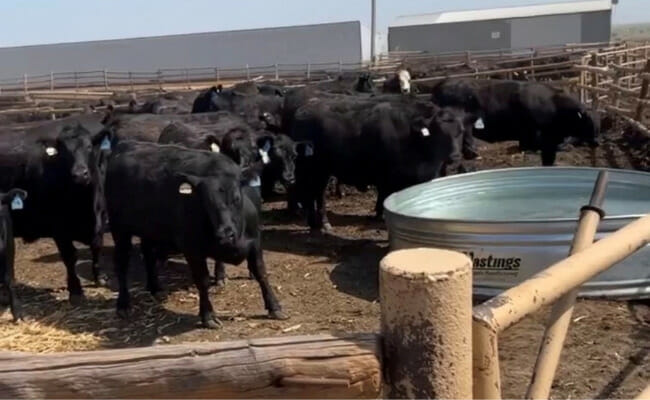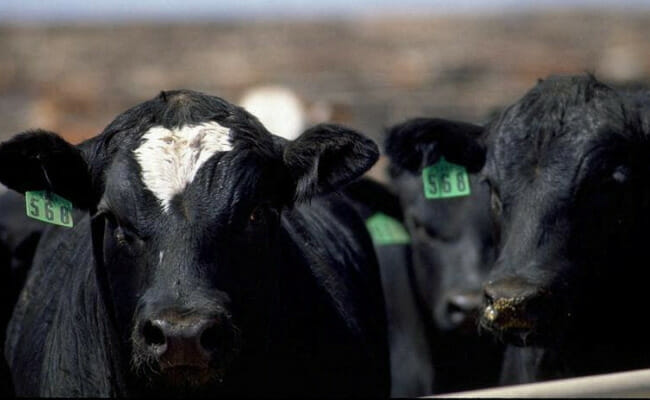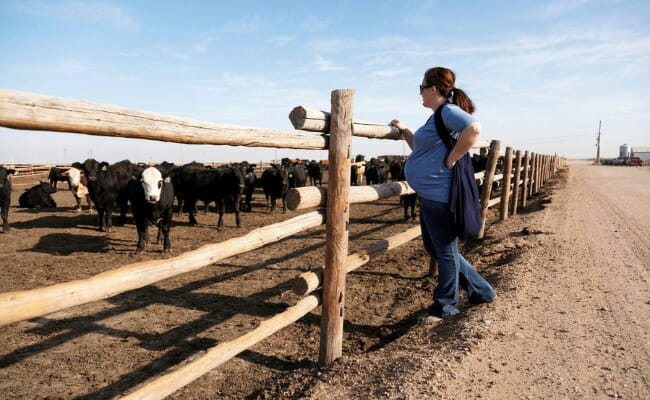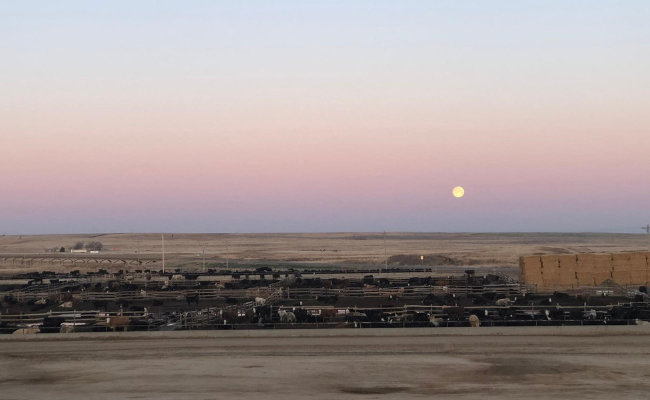Thousands of dead US cattle buried, dumped at Kansas landfill after heat wave
Top U.S. cattle feeding companies sent 1,000-pound carcasses to a Kansas landfill, where they were flattened by loader machines and mixed with trash after a June heat wave killed thousands of cows, documents were seen by Reuters show.
Other cattle were buried in unlined graves, a feeding company said.
Neither is a typical method for disposing of bodies. But so many cows died in the unusual heat and humidity that facilities that normally convert carcasses into pet food and fertilizer products were overwhelmed, prompting the state government and cattle feeders to take emergency measures.
The mass deaths and subsequent scramble to deal with decaying bodies sparked a push for changes in the meat industry in Kansas, the third-largest U.S. cattle state.
Kansas is forecast to see more high temperatures that can stress and potentially kill cattle this summer, adding to the myriad problems caused by increasingly extreme weather linked to climate change.

Cattle in a pen with supplemental water tanks, at Cattle Empire feedyard, in Satanta, Kansas, U.S., June, 2022. Tera Barnhardt/Handout via REUTERS
Although state officials authorized companies to dispose of carcasses at the Seward County Landfill in Liberal, Kansas, they are now considering alternatives to decrease the risks of foul smells and other problems if more deaths occur, the landfill’s director said.
The disposal methods and identities of companies that lost cattle have not previously been reported. They were contained in documents Reuters obtained from the Kansas Department of Health and Environment and confirmed by some companies involved.
At least 2,117 cattle died after humidity levels spiked, winds disappeared and temperatures topped 100 degrees Fahrenheit (38°C) in southwestern Kansas during the weekend of June 11, state records show. It was early in the year for such heat and before some cattle had fully shed their winter coats.
Seward County Landfill Director Brock Theiner estimated the dump alone took in roughly 1,850 to 2,000 dead cattle.

Cattle look on from a pen at Five Rivers Cattle Feeding, in Ulysses, Kansas, U.S., in this undated handout picture. Donna Hendren/Five Rivers Cattle Feeding/Handout via REUTERS
FLATTENED CATTLE, PUTRID SMELL
Landfill workers used loading equipment with steel wheels to flatten the cattle to about eight inches and mixed the bodies with garbage, a process that took nearly three weeks, Theiner said.
“After you run them over they’ll go flat, but they’re gonna sponge back up,” Theiner said. “You get a mass of ’em and you get on it, and it’s like running a piece of equipment on top of a water bed. It moves.”
Kansas temporarily suspended requirements that carcasses be covered by at least six inches (15.24 cm) of dirt or trash each day due to the unexpected deaths, Theiner said. The carcasses had a putrid smell up close, he added.
“Once you got in it, whew!” he said. “I have a couple of operators that have iron guts.”
Landfills are the last resort for carcasses because of complications with smells, animals digging in trash, and difficulties covering the bodies immediately, Theiner said. Kansas officials are exploring whether more cattle could be composted at feedlots instead, he said.

Veterinarian Tera Barnhardt checks on a pen of cattle, at Cattle Empire feedyard, in Satanta, Kansas, U.S., in this undated handout picture. Tera Barnhardt/Handout via REUTERS
The Kansas Department of Health and Environment did not respond to questions.
Cactus Feeders, which says it handles 4% of U.S. fed cattle, sent carcasses to the dump, as did Cobalt Cattle, Meade County Feeders, and Irsik & Doll’s Sunbelt Feed Yard, department records show. The companies, which fatten cows on grain before slaughter, had no comment.
Grant County Feeders in Ulysses, Kansas, shipped carcasses to the landfill because rendering plants were full, said Tom McDonald, an executive with owner Five Rivers Cattle Feeding – the world’s largest such company which counts meatpacker JBS SA among its customers.
Cows that die of heat stress are not processed into meat for human consumption but can normally be converted into animal food, fertilizer, and other products.
Moving forward, Five Rivers will feed cattle less grain, a high-energy ingredient, and more hay and silage when temperatures rise to minimize their internal heat, McDonald said. The company is not considering other steps like adding shade, he said, because the mass deaths were rare.

General view of the Cattle Empire feedyard during sunset, in Satanta, Kansas, U.S., 2022. Tera Barnhardt/Handout via REUTERS
Cattle Empire, a feed yard in Satanta, Kansas that supplies Tyson Foods, put carcasses in landfills and buried others in unlined pits with the mineral lime to break down the bodies faster, veterinarian Tera Barnhardt said.
Burying cattle in unlined pits is one of the riskiest disposal methods because waste can seep into groundwater, said Hannah Connor, senior attorney for the Center for Biological Diversity.
Kansas allows unlined burials near Cattle Empire because the groundwater is deep down, Barnhardt said.
All told, at least 617 cattle were buried by Cattle Empire, Friona Industries, NextGen Cattle, and Clark County Feeders, state documents show.
Hot, humid air gave the animals the feeling they were suffocating, Barnhardt said.
For cattle that survived, some are eating in unusual patterns that can diminish their ability to gain weight, veterinarians said.
“Cattle are somewhat still struggling,” Barnhardt said. “We really compromised them.”

